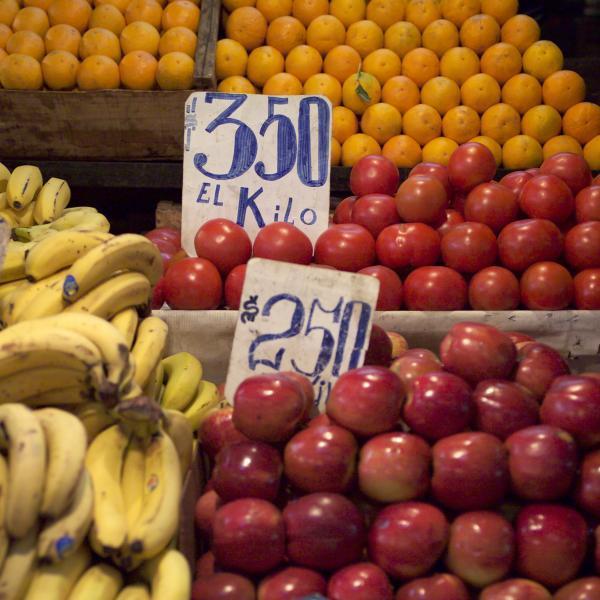INRA and CNRS French scientists and UFC German scientist discovered that the global economic value of pollinators pollination, mostly bees, is up to £ 153 billion in 2005 for with the main crops of the world.
This figure accounts for 9.5% of the total value of agricultural food production globally. The study also determined that pollinator loss may cause an estimated consumer surplus of between £ 190 and 310 billion . The results of the study of the economic value of world agricultural losses at the risk of pollinators decline are published in the journal Ecological Economics.
According to the study, pollination decline can affect three major crops (according to the term of the World Food Organization FAO), fruits and vegetables are most affected, up to 50 billion pounds. , followed by edible oilseed plants with £ 39 billion.
In concerns about biodiversity, the decline of pollinators is a serious problem, but its impact remains an open question. Specifically, the economic value of sour pollination has not been evaluated on a reliable basis. Based on data from a critique published in 2007 on the dependence on animal receptors of major crop species, the study uses FAO data to calculate the value of pollination activity for produce. worldwide food intake. The total economic value of pollination in the world is up to 153 billion pounds in 2005, accounting for 9.5% of the total value of global agricultural production . 3 main crop categories (in FAO terminology) are particularly disturbing; Fruit and vegetables were the hardest hit, amounting to £ 50 billion , followed by edible oilseed crops with £ 39 billion. The effect on stimulants, nuts and spices is less serious, at least economically.
 According to the study, the decline of pollinators can affect three major crops (in terms of FAOi), the most severely affected fruits and vegetables, up to 50 billions of pounds, followed by edible oilseed trees with 39 billion pounds (Photo: André Künzelmann / UFZ)
According to the study, the decline of pollinators can affect three major crops (in terms of FAOi), the most severely affected fruits and vegetables, up to 50 billions of pounds, followed by edible oilseed trees with 39 billion pounds (Photo: André Künzelmann / UFZ)
The scientists also found that the average value of plants depends on pollinators because of higher crop yields than non-pollinated crops such as cereals or sugarcane (760 and 150 pounds per ton. The rate of damage is determined as a percentage of the economic value of pollination activity divided by the total value of crop production. This ratio varies significantly between crop categories with a maximum of 39% for stimulants (pollinated coffee and cocoa), 31% for nuts and 23% for fruits . The correlation between crop value per product unit and damage rate is favorable; The higher the level of dependence on pollinators, the higher the price per ton. From the point of view of the stability of world food production, the above results show that for 3 crop categories - fruits, vegetables and stimulants - the situation will change significantly if the pollinators are pollinated. all disappear because world production is no longer sufficient to meet current needs. Importers, like the European Community, will be severely affected. This study is not a forecast because the estimated values do not take into account the strategies or policies that producers and components of the food chain can use if faced with such a situation. In addition, the data in the study considered the complete disappearance of pollinators rather than gradual decline.
The consequence of pollinators' decline in consumers, economically, is calculated based on the price elasticity of demand. Price elasticity reflects the impact of price changes on consumer purchases, ie the percentage reduction in purchases when prices increase by 1%. The researchers stated that the real value of price elasticity ranges from -0.8 to -1.5 (for the value of -0.8 consumer demand will decrease by 0.8% when price increases 1 %). Under these theories, consumer surplus losses will be around £ 190 to 310 billion in 2005.
These results underscore that the complete disappearance of pollinators, especially the main pollinators such as honey bees and wild bees, will not cause a catastrophe that will cause world agriculture to collapse, but will bring economic consequences are counting even though the figures only consider the plants used directly to humans. Economic strategies - such as redistribution of cropland and the use of alternative sources in the food industry - will partly limit the consequences of pollinators' decline. However, researchers do not take into account the effect of lack of pollinators on the seeds used for planting, which is a very important factor that is important for many types of vegetables and grass for livestock. Therefore, animal husbandry, non-food crops and, perhaps the most important, wildflowers and ecological services that natural flora provides for agriculture and society. £ 153 billion equals US $ 217 billion at the exchange rate on September 15, 2008.
 'Fine laughs' - Scary and painful torture in ancient times
'Fine laughs' - Scary and painful torture in ancient times The sequence of numbers 142857 of the Egyptian pyramids is known as the strangest number in the world - Why?
The sequence of numbers 142857 of the Egyptian pyramids is known as the strangest number in the world - Why? History of the iron
History of the iron What is alum?
What is alum?